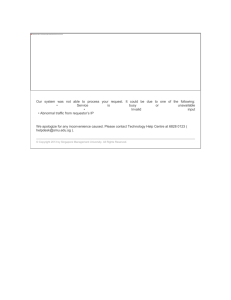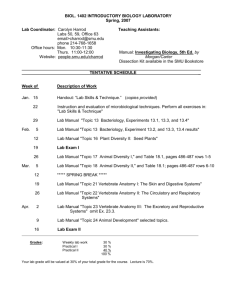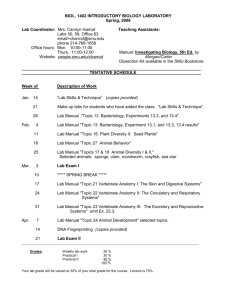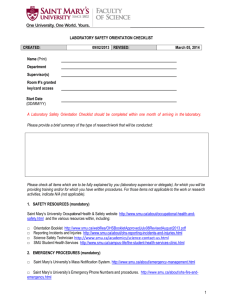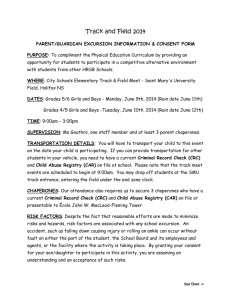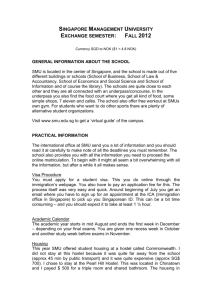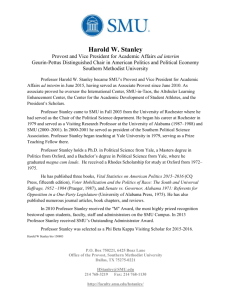Mendocino County Soil Mapping
advertisement
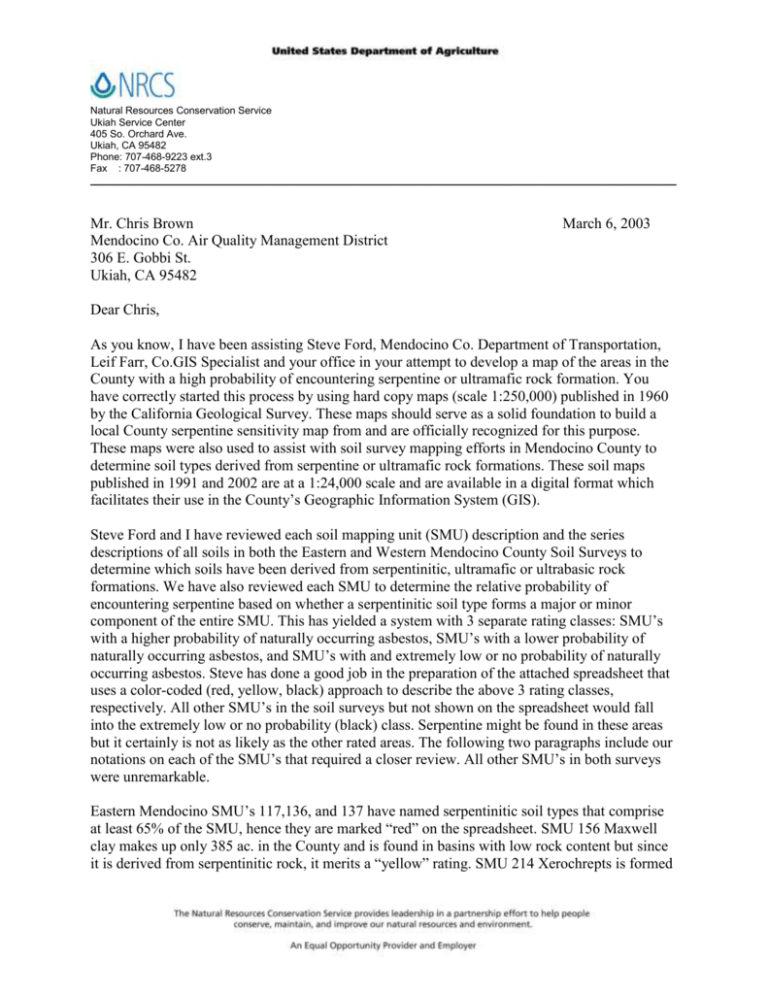
Natural Resources Conservation Service Ukiah Service Center 405 So. Orchard Ave. Ukiah, CA 95482 Phone: 707-468-9223 ext.3 Fax : 707-468-5278 _________________________________________________________________________________________________________ Mr. Chris Brown Mendocino Co. Air Quality Management District 306 E. Gobbi St. Ukiah, CA 95482 March 6, 2003 Dear Chris, As you know, I have been assisting Steve Ford, Mendocino Co. Department of Transportation, Leif Farr, Co.GIS Specialist and your office in your attempt to develop a map of the areas in the County with a high probability of encountering serpentine or ultramafic rock formation. You have correctly started this process by using hard copy maps (scale 1:250,000) published in 1960 by the California Geological Survey. These maps should serve as a solid foundation to build a local County serpentine sensitivity map from and are officially recognized for this purpose. These maps were also used to assist with soil survey mapping efforts in Mendocino County to determine soil types derived from serpentine or ultramafic rock formations. These soil maps published in 1991 and 2002 are at a 1:24,000 scale and are available in a digital format which facilitates their use in the County’s Geographic Information System (GIS). Steve Ford and I have reviewed each soil mapping unit (SMU) description and the series descriptions of all soils in both the Eastern and Western Mendocino County Soil Surveys to determine which soils have been derived from serpentinitic, ultramafic or ultrabasic rock formations. We have also reviewed each SMU to determine the relative probability of encountering serpentine based on whether a serpentinitic soil type forms a major or minor component of the entire SMU. This has yielded a system with 3 separate rating classes: SMU’s with a higher probability of naturally occurring asbestos, SMU’s with a lower probability of naturally occurring asbestos, and SMU’s with and extremely low or no probability of naturally occurring asbestos. Steve has done a good job in the preparation of the attached spreadsheet that uses a color-coded (red, yellow, black) approach to describe the above 3 rating classes, respectively. All other SMU’s in the soil surveys but not shown on the spreadsheet would fall into the extremely low or no probability (black) class. Serpentine might be found in these areas but it certainly is not as likely as the other rated areas. The following two paragraphs include our notations on each of the SMU’s that required a closer review. All other SMU’s in both surveys were unremarkable. Eastern Mendocino SMU’s 117,136, and 137 have named serpentinitic soil types that comprise at least 65% of the SMU, hence they are marked “red” on the spreadsheet. SMU 156 Maxwell clay makes up only 385 ac. in the County and is found in basins with low rock content but since it is derived from serpentinitic rock, it merits a “yellow” rating. SMU 214 Xerochrepts is formed in a hillslope position derived from serpentinite and has 2 serpentinite soil inclusions; hence the “red” rating. SMU’s 215and 216,while having Xerochrepts, are associated with alluvium derived from various rock sources, so a “yellow” rating is recommended. SMU 228 has two listed serpentine soil inclusions giving it a "yellow” rating. SMU’s 229, 230, 232-234 have only one serpentine soil inclusion and the total amount of inclusions are 25% or less of the SMU, therefore, a “black” rating is given. While SMU 231 also has only one serpentine soil inclusion , inclusions make up 30% of the SMU, which merits a “yellow” rating. Western Mendocino SMU’s 133,134,162, and 179 have named serpentine soil types that comprise at least 85% of the SMU, hence they are marked as “red”. SMU’s 233 and 234,while having Xerochrepts, are associated with alluvium derived from mixed rock sources, so a “yellow” rating is recommended. SMU 242 has one named serpentine soil inclusion but total inclusions comprise only 20% of the SMU, hence a “black” rating is merited. SMU’s 241and 243-245 are derived from schist and sandstone, so a “black “rating was assigned. This letter was written to document technical assumptions made in the use of the soil mapping as your agency develops tools to rate portions of the County for its potential for encountering an asbestos hazard. This has been a very interesting use of this valuable soil survey information that I hope has assisted you to address this critically important public health issue. If I can answer any questions you may have regarding this soil information, don’t hesitate to contact me. I enjoyed working with you, Steve and Leif on this project and would like to receive a copy of the final map when it has been produced. Sincerely, Tom Schott District Conservationist
